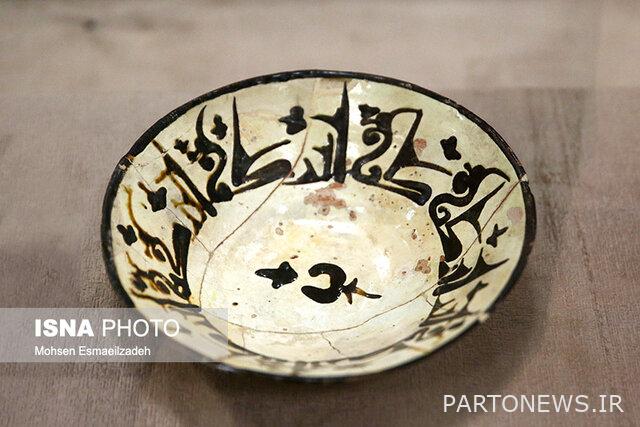A look at the various and old trades of artisans in the Anthropological Museum of Gonabad
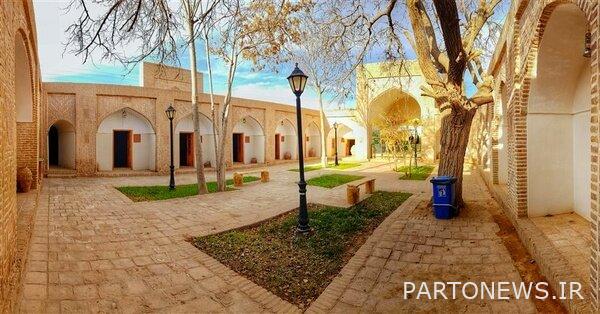
Cultural connection between museums is one of the most important ways to study and recognize cultures and bring museums out of stagnation and enrichment. It is good that from time to time the works of different museums of the country are entrusted to each other. This must continue as long as it becomes a cycle of the museum’s cultural exchanges.
Gonabad Anthropology Museum was established in the building of Gonabad Astronomical School. The building of this school is located in the eastern alley of Gonabad city, next to one of the entrances of the community mosque. This school is one of the relics of Islamic architecture in the Safavid era, which shows the value of science and knowledge in those days. Due to the teaching of astronomy in this school, it is known as the astronomy school and its architecture includes the entrance porch of the corridor, the courtyard and the rooms around it.
This building was renovated during the Qajar period and its construction was changed. In the not so distant past, it was used as a cultural heritage, tourism and handicrafts office in Gonabad and a collection of traditional arts, but in February 2006 Another application was added and in this place, the first anthropological museum of Gonabad city was opened from the place of presidential travel credits.
In this museum, a corner of customs, way of life, local occupations and traditional arts of the people of Gonabad are exhibited.
نمدمالی
Felt felt is one of the native professions of Gonabad craftsmen, the production method of which is displayed in the museum. All kinds of felt products are made by compacting wool and fluff masses in suitable technical conditions by kneading. Products such as felt hats, felt coats, underlay felt are in this category that are widely used among Khorasan nomads. The art of felt weaving has been popular in the villages of Gonabad for a long time.
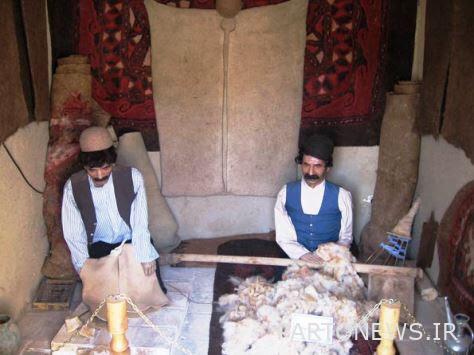
Perfumery and medicinal plants
In the past, Attari was the foundation of traditional medicine in this land. Khorasan Razavi is one of the richest lands in the field of herbal medicine due to its diverse vegetation, foothills and plains full of medicinal plants. The most important medicinal and spice types are borage, cockatiel, pepper, lavender, tripe, hyssop, cinnamon, turmeric, mangosteen and thyme. In addition to meeting the medicinal needs of the people, perfumers have provided their other needs in the field of various syrups, distillates, spices and so on.
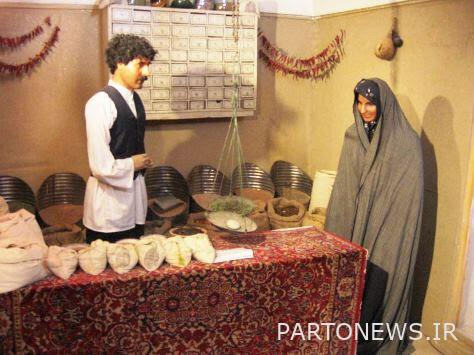
Production of textiles
Another pavilion of the Museum of Textile, Handicraft or Traditional Textile in Gonabad is on public display. These traditional fabrics are produced with the help of 2-in, 4-in and 4-in knitting machines. Jajim, hand-woven fabrics of cotton, wool and silk are examples of these products that are woven in urban, rural and nomadic areas.
Handicraft from the distant past is one of the traditional trades of the craftsmen of this region and in most villages it is produced in the form of home or workshop. Other traditional weavings of Gonabad include the products of weavers and weavers, which include a variety of towels, handkerchiefs, lags, tents and shirt fabrics.
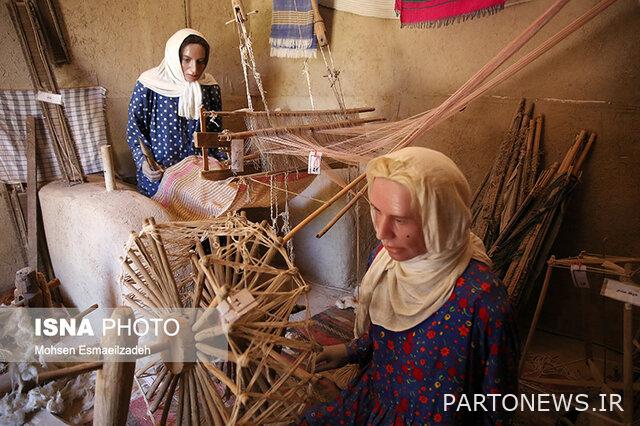
قنات قصبه
Qasbeh aqueduct is one of the most amazing water structures in the world and the oldest aqueduct in the world, which is more than 33,000 meters long and has more than 470 wells. Therefore, the profession and profession of drilling and dredging wells in Gonabad has enjoyed a special prosperity. This aqueduct was dug in the Achaemenid era and a wooden well was used to dig it.
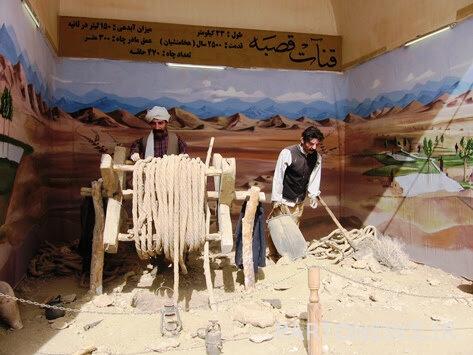
دنگ
In a booth of the Gonabad Anthropological Museum, a device called Deng has been exhibited, which has been used to crush millet and other grains to separate its shell. This device is made of a wide piece of wood 3.5 to 4 meters long, the upper part of which is in the shape of a wand. At the end of the wood, there is a hole through which another wood passed as an axis, and two wooden bases have been installed on both sides of this axis.
First, the grain or millet is poured into the pit, then 2 people stand at the end of the dang stick, put their feet on the main stick and press so that the dang head part moves upwards. After that, when the main axis is lowered, the part of the device that is closer to the hot part jumps on it, and this operation was done several times to remove the grain skin from it. After threshing, on the day when the wind blows, the seeds are blown to separate the skin from the seeds.
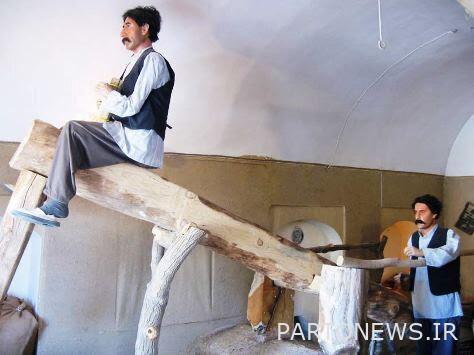
traditional house
One of the museum booths is dedicated to a view of a traditional house in Gonabad. Traditional houses in Gonabad are about 150 to 300 square meters. The yard is located in the central part of the house where the rooms are built according to the needs of the family on all four sides. These houses have an indoor space called Dalan or Deloneh, which connects the entrance to the courtyard with a screw.
Other traditional house spaces in Gonabad include Kahdo or Kahidan, Tavileh, winter living room which is sunny, porch or plateau which is a covered space and one meter above the yard level, summer living room which is connected to a windbreak, storage room and kitchen. Or the kitchen pointed out.
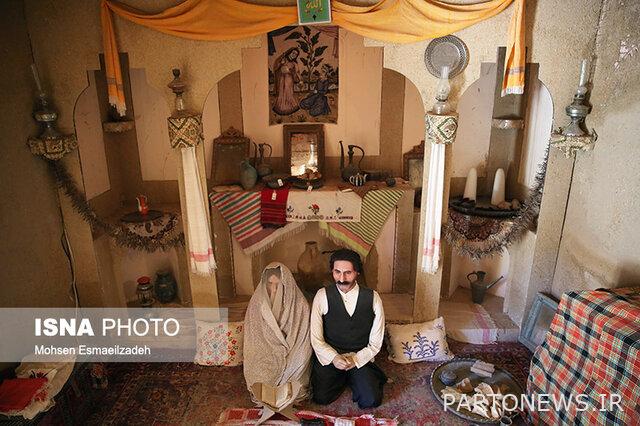
Blacksmithing
Blacksmithing is one of the historical occupations in all human societies. The discovery of iron metal and how it was used revolutionized the fate of human life. Blacksmiths were the mother of the manufacture and production of basic human tools. In these places, the blacksmith makes various iron products such as shovels, pickaxes, nails, plows, chains, four horns, pliers and scissors. The tools and equipment used in blacksmiths include charcoal pliers, tilt pliers, pliers, hammers, pens, solenoid anvils, and inhalers.
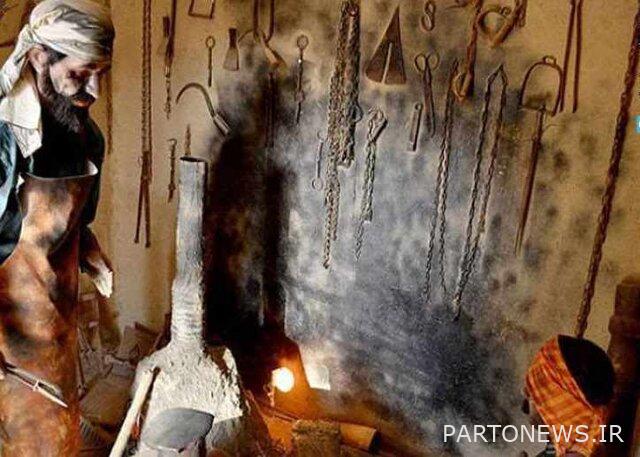
carpet weaving
In Gonabad, strong wooden beams are used for carpet weaving and vertically. Gonabad carpet weavers’ tools include scissors or combs, knives, scissors and all kinds of colored wool fibers. In the weaving of these carpets, wool fibers and rarely cotton are used. The patterns used on the carpet area of this region are similar to the common designs in other parts of South Khorasan. In the weaving of Gonabad carpets, Persian knots are used, which are called Persian weaving.
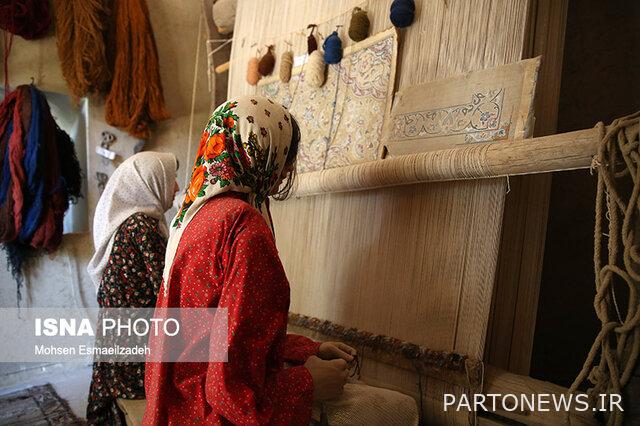
خراس
In one of the booths of this museum, the process of extracting oil from oilseeds using local lubrication devices is displayed. The Gonabadis call this device Khoras or Assari device. The main part of Khoras is made from the thick trunk of a mulberry tree and the stone inside it, which is known as childhood stone, is cut from fear stone or granite in the form of empty and bucket-shaped cylinders. The lower part consists of two connected sticks, one side of which is tied to the waist of the donkey, so that it rotates around its axis.
On the other hand, it is tied to a horse, mule or donkey and rotates on all fours. The top mortar or stick is attached to the bottom stick, which is closed with an ester, and placed inside the baby rock; In this way, the oil seeds are squeezed and their oil is taken out of the bottom hole and consumed.
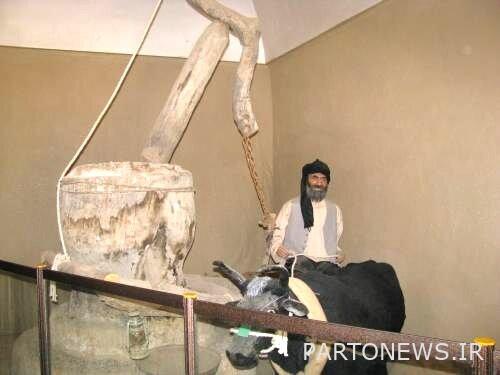
Pottery
This pottery is produced in one of the villages of Gonabad called Mand village. Pottery in Gonabad, with a history of over 5,000 years, follows the same methods of construction as its contemporaries, but pottery with different materials and decorations became an emerging phenomenon in the Mand region in the late 11th century AH and is associated with Meybod Yazd pottery. Fars and Shahreza of Isfahan are very similar.
Pottery is divided into two groups according to the type of building material: physical and porcelain. The raw material of clay pottery and porcelain pottery is a combination of stone powder and sarshur mud. Pottery is usually glazed, but its most important feature is its decorative elements from nature.
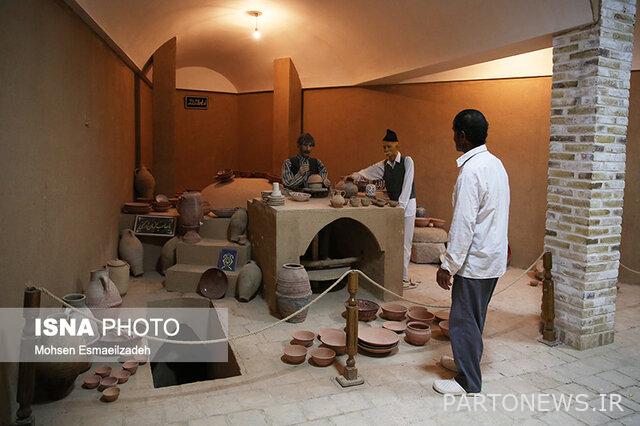
These elements include four groups of human, animal, plant and geometric, which among the famous motifs of this pottery can be named the role of fish, which has a high place in mythological narratives. Patterns of sun, bird, butterfly, idol, flower and chicken, flower and butterfly, pumpkin flower, inscription, taboos, Islamic types and other types of designs used on the body of pottery are considered. It is on display from the booths.
